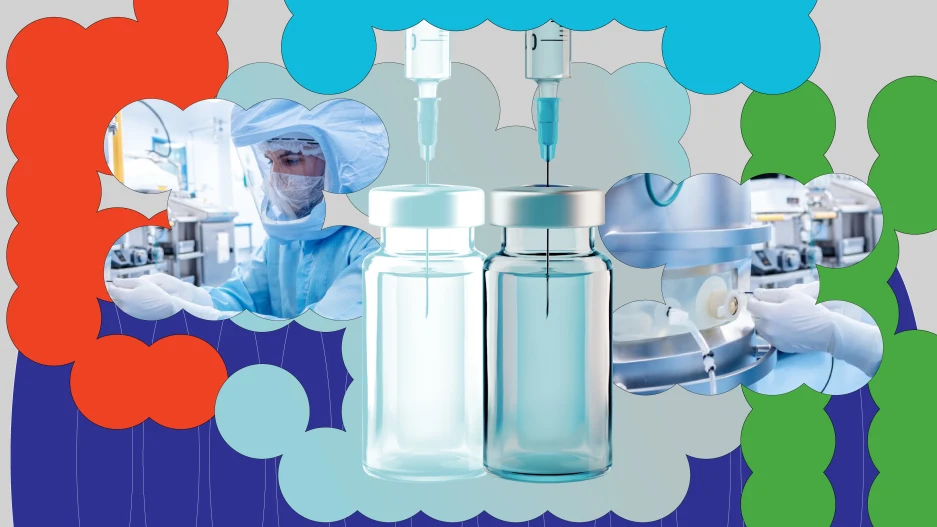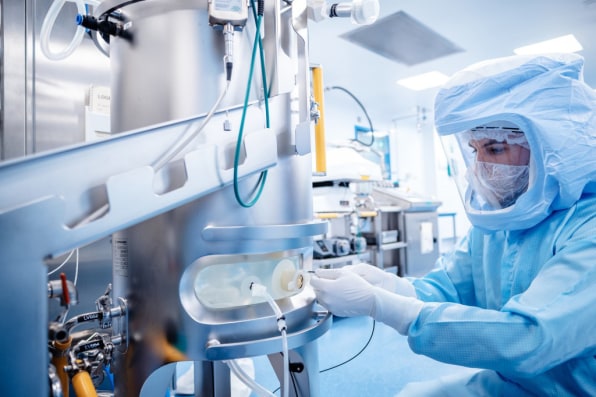Digital twins on the manufacturing menu – with help from the hyperscalers
SOURCE: HTTPS://WWW.IOTTECHNEWS.COM/
NOV 16, 2023
How Siemens helped scientists produce COVID-19 vaccines on a massive scale
SOURCE: DIGITALJOURNAL.COM
MAY 03, 2022

Scientists developed the COVID-19 vaccine lightning fast compared to typical vaccine timelines, thanks to decades of previous scientific work and monumental resources. But getting the vaccine through clinical trials and regulations was only one part of the challenge—the other was producing it on a massive scale.
To take a vaccine and scale it up to billions of doses requires numerous calculations: How much of each component goes into each dose? How many machines does each facility need to manufacture those components? How full do the vials need to be to deliver an effective dose, without breaking or spilling over? How cold do those vials need to stay, and what logistics are needed to keep them at that temperature in transport?
Doing real-time tests and trials for all of those variables would have taken years under normal conditions. So, instead, pharmaceutical companies, with help from companies like Siemens, used “digital twins” to speed up all that work. A digital twin is a virtual model of a real-life object or system that can be updated with real-time data, and which uses simulations to try all sorts of decisions. It’s an entire replica of the process in the digital world, so experts can run thousands of models and calculations at once, instead of doing meticulous tests one by one in a lab to figure out what’s needed at every step of the vaccine production process. With digitalization and digital twin software, Siemens partnered with vaccine manufacturers to rapidly scale up vaccine production without years of non-simulated testing and development.

[Photo: Siemens]
Using digital twins is only one way Siemens helped speed up vaccine production. The company also helped BioNTech convert a facility in Marburg, Germany, to produce its mRNA COVID-19 vaccine, which it developed with Pfizer, in record time—cutting the estimated over-a-year timeline to just five months, with automation and digitalization tech. That work included digitizing records for paperless documentation, so BioNTech could immediately fulfill all documentation requirements, and an automated weighing process that replaced manual work. Siemens’s vaccine production software and digitalization is the winner of the pandemic response category of Fast Company’s 2022 World Changing Ideas Awards.
The concept of digital twin simulations was first used for Apollo 13; with internet and technological advancements, they’ve become common in the past decade for testing and to meet regulations in different industries. “If you have to license a new aircraft, most of the work will be done digitally,” says Stephen Ferguson, simulation engineer at Siemens. “You can’t afford to build lots of aircrafts; you can only build one or two test prototypes and most of the engineering work will be done using digital twins.” What’s notable about Siemens’s work with digital twins for the COVID-19 vaccine is its massive scale for a vaccination effort, and the way it made quick work of addressing a problem threatening most of the world’s health.
Digital twins helped with nearly every process of the rollout, and for multiple vaccines. For viral vector vaccines like AstraZeneca’s, for example, that viral vector is made inside cells in a lab, so to scale its production requires knowing how many cells are needed and how many bioreactors are needed in a vaccine facility in order to grow those cells—calculations aided by digital twins without costly real-world trial and error.
For the mRNA vaccines, fatty lipids are needed to protect the mRNA molecule, and the mixing of mRNA and liquid nanoparticles is done on nanoscale; large bulk mixing isn’t possible. So the digital twin allowed manufacturers to run computational fluid dynamics simulations to find solutions, rather than carrying out expensive, slow prototypes. “We can run thousands of simulations, hundreds of thousands of simulations sometimes, in the time it would take to make one test,” Ferguson says. “What we can’t afford to do is keep building those processes in the real world. We do it on a computer first.”
While digital twin technology already existed, it hadn’t previously been used in vaccine production to this extent, in part because the desperate bid of scientists to create a vaccine spurred more investment into the technology. “Lots of these things were available in the background as kind of research projects,” Ferguson says. “It’s getting them into the real world and real manufacturing processes that was the revelation.” The effort to immunize the world against COVID-19 has been the biggest vaccine campaign in history. More than 10 billion doses of COVID-19 vaccines have been administered around the world, with more than half of the global population fully vaccinated. “Without digital twins, it wouldn’t have been possible to do this,” he says.
Now that digital twins have had such a robust proof of concept on this massive scale, he thinks they’ll revolutionize vaccine development in the future. “There’s been a step change,” he says. “Whether it’s another pandemic or whether it’s something like HIV or other vaccines in development, they’re going to start using the same technology. So, I think what this whole horrible process has done is give us a better and quicker way of reaction to these kinds of pandemics. In the future, lots of existing problems we haven’t been able to solve will be solved by using digital twins.”
LATEST NEWS
WHAT'S TRENDING


Data Science
5 Imaginative Data Science Projects That Can Make Your Portfolio Stand Out
OCT 05, 2022

SOURCE: HTTPS://WWW.IOTTECHNEWS.COM/
NOV 16, 2023
SOURCE: HTTPS://AITHORITY.COM/
OCT 03, 2023
SOURCE: HTTPS://WWW.SCIENCEDAILY.COM/
AUG 08, 2023
SOURCE: HTTPS://WWW.GLOBALLOGIC.COM
JUL 06, 2023
SOURCE: HTTPS://INDIAAI.GOV.IN/ARTICLE/HOW-DIGITAL-TWIN-TECHNOLOGY-WILL-EVOLVE-IN-2023
JUL 04, 2023
SOURCE: HTTPS://WWW.CNBC.COM/2023/01/21/DIGITAL-TWINS-ARE-SET-FOR-RAPID-ADOPTION-IN-2023.HTML
JUN 30, 2023